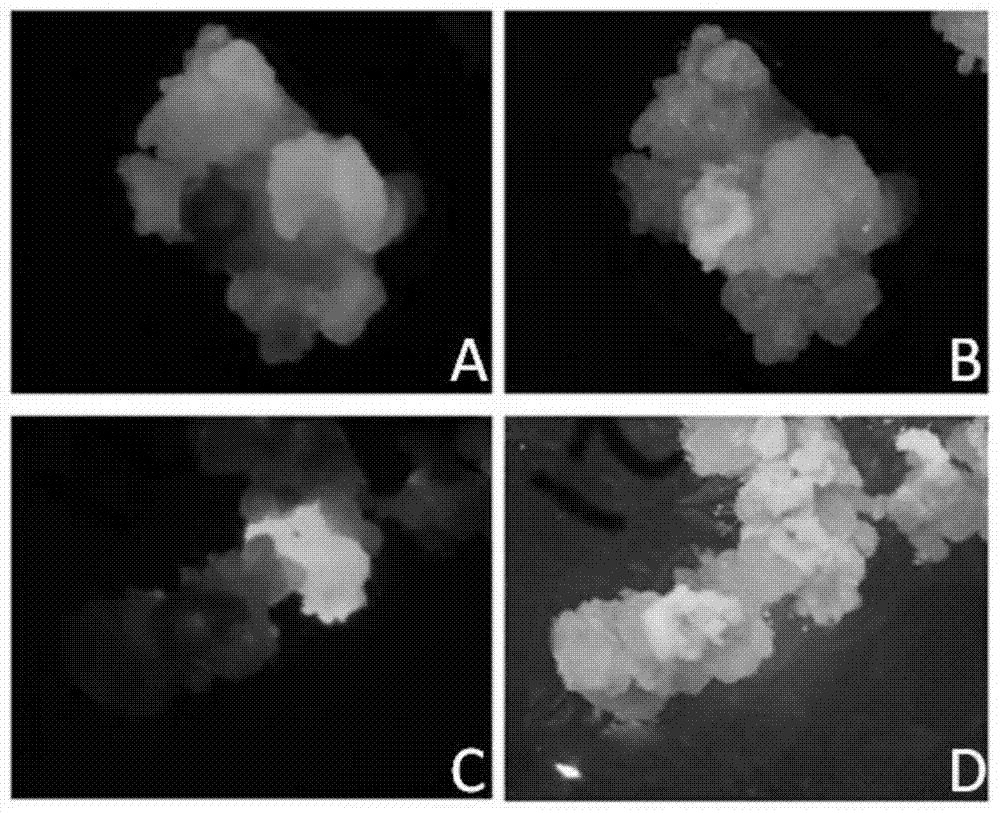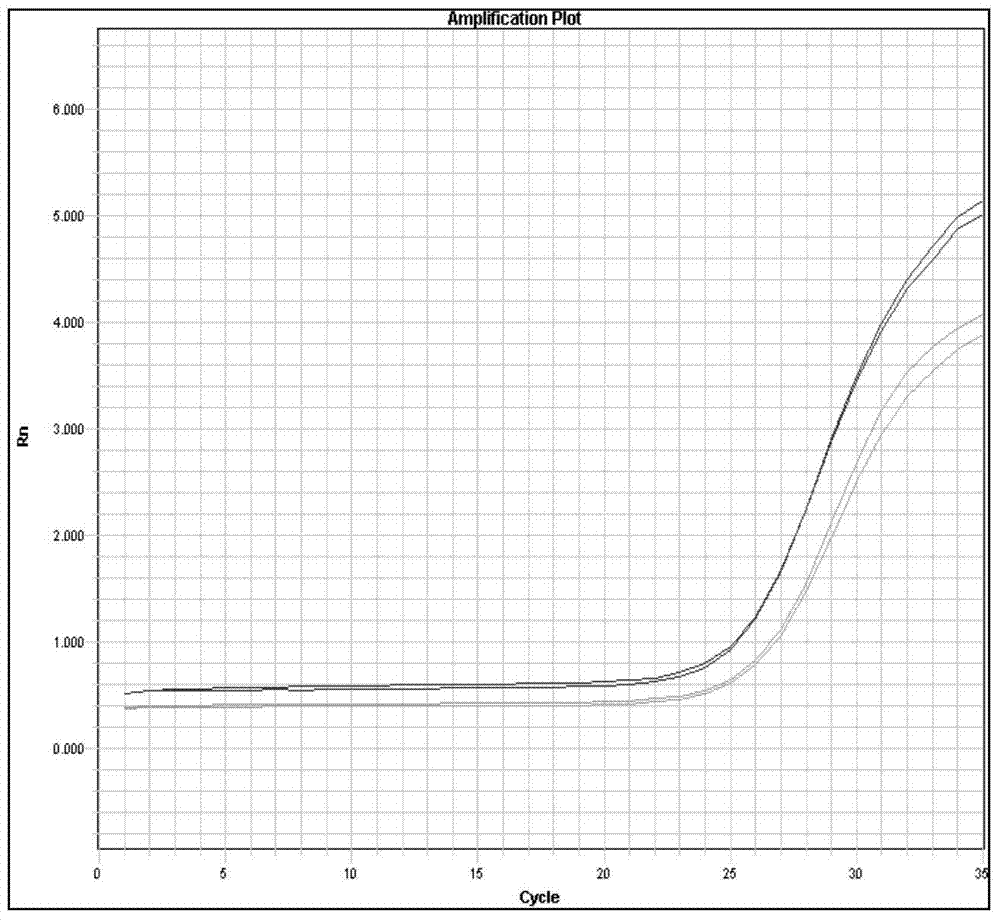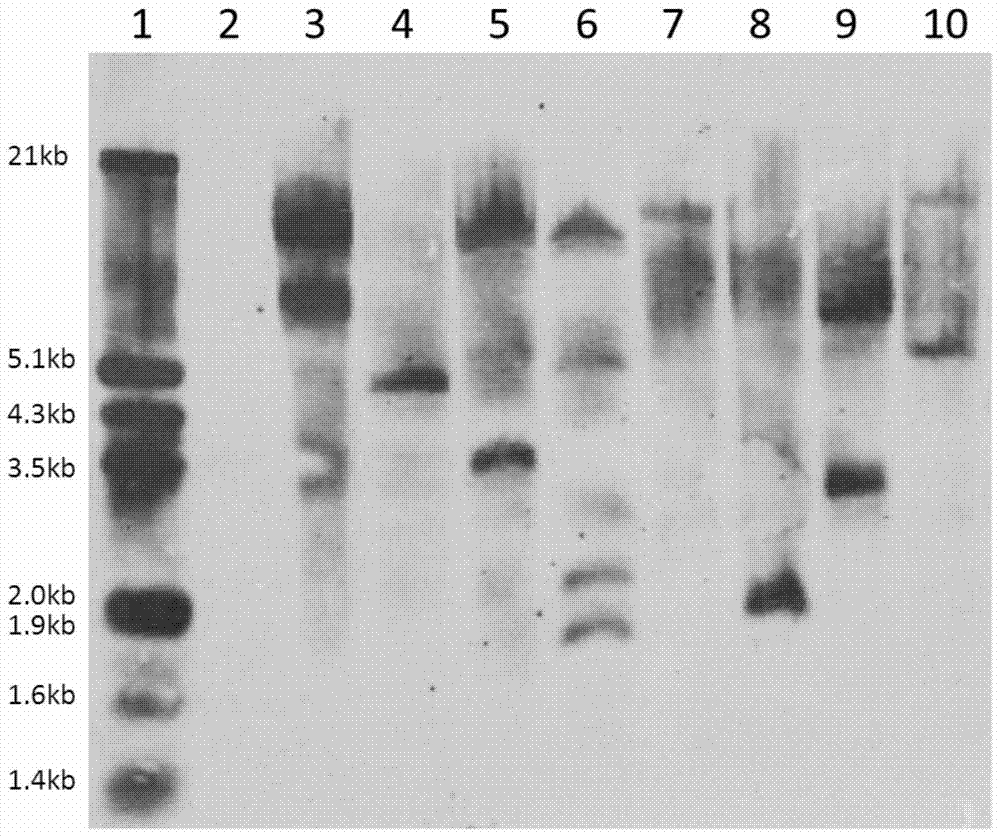Culture medium and culture method for breeding transgenic maize
A technology of transgenic corn and culture medium, which is applied in horticultural methods, genetic engineering, chemical instruments and methods, etc., can solve the problems of long cycle of breeding technology, and achieve the effects of short cycle, high positive rate and simple operation.
- Summary
- Abstract
- Description
- Claims
- Application Information
AI Technical Summary
Problems solved by technology
Method used
Image
Examples
Embodiment 1
[0040] The preparation method of embodiment 1 transgenic corn
[0041] The corn inbred line used in this example is AY63, provided by China Seed Group Co., Ltd.
[0042] 1. Corn ear processing and separation of immature embryos
[0043] (1) 6-15 days after the pollination of the corn plant, when the immature embryo grows to 0.5-2.0mm, harvest the young ears of corn, remove the bract leaves, and prepare for sterilization;
[0044] (2) Dilute the sodium hypochlorite mother liquor with a concentration of 6.15% to 15%-20% by volume with sterilized water, add 5-10 μ L Tween-20 to each liter of solution and mix to make a sterilized solution;
[0045] (3) Soak the young ears of corn in the sterilizing solution for 15 minutes, rinse with sterile water for 3-5 times, and set aside;
[0046] (4) Peel off the top of the seed with a sterile surgical blade in an ultra-clean workbench, dig out the endosperm with a sterile spatula to expose the immature embryo from the seed, peel off the i...
Embodiment 2
[0072] Example 2 Optimization of AY63 young embryo Agrobacterium transformation system
[0073] 1. Add NAA to co-cultivation medium and callus induction medium
[0074] In the stage of co-cultivation and callus induction, in addition to adding an appropriate amount of plant growth regulator 2,4-D to the medium, the addition of different concentrations of NAA had certain effects on the transformation efficiency. The effect of its addition is shown in Table 1. Adding 0.5 mg / L NAA or 1.0 mg / L NAA to the co-cultivation and callus induction medium greatly improved the transformation rate, with the average value increased from 1.63% to 3.66% and 3.42%.
[0075] Table 1 The conversion rate (%) comparison of adding different concentrations of NAA in the co-cultivation medium and the callus induction medium
[0076]
[0077] 2. Add KT to co-cultivation medium and callus induction medium
[0078] In the stage of co-cultivation medium and callus induction culture, in addition to ad...
Embodiment 3
[0089] The detection of embodiment 3 transgenic corn
[0090] 1. Observation on the expression of exogenous gene GFP in transgenic maize tissue
[0091]Take the AY63 transformed callus of Example 1 to observe the expression of the exogenous gene GFP in the tissue, and see green fluorescence under the fluorescence, indicating that the exogenous gene is successfully expressed, otherwise it is a negative material, and the negative material is compared with the positive material. There is no typical green fluorescence, and the callus is yellow ( figure 1 ).
[0092] 2. Real-time PCR detection
[0093] ABI 7900 fluorescent quantitative PCR instrument was used.
[0094] The internal reference gene was IVR, the forward primer was 5-ACTAGGCATCCAAGGCGAACG-3; the reverse primer was 5-AGTGCGAGAAGAACGAGTGTCC-3'. The target detection gene is Bar, the forward primer is 5-GACCTCCACCGTGAACTTCC-3; the reverse primer is 5-GTCCAGTCGTAGGCGTTGC-3'.
[0095] PCR reaction system (10 μL): 5 μL o...
PUM
 Login to View More
Login to View More Abstract
Description
Claims
Application Information
 Login to View More
Login to View More - R&D
- Intellectual Property
- Life Sciences
- Materials
- Tech Scout
- Unparalleled Data Quality
- Higher Quality Content
- 60% Fewer Hallucinations
Browse by: Latest US Patents, China's latest patents, Technical Efficacy Thesaurus, Application Domain, Technology Topic, Popular Technical Reports.
© 2025 PatSnap. All rights reserved.Legal|Privacy policy|Modern Slavery Act Transparency Statement|Sitemap|About US| Contact US: help@patsnap.com



